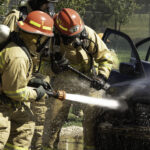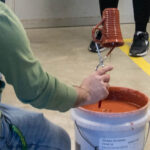Proper car maintenance should always a priority, but winter brings about conditions that make attention to preparedness crucial. These winter car care tips have been shared by experts at Autotrader and State Farm, to help you navigate the season safely.
Check your lights
Visibility can be diminished with fog, heavy rain, and snow conditions commonly seen in winter. Seeing and being seen by others strongly increases your chances of avoiding collisions. Make sure all lights – turn signals, break, and backup lights – are functioning optimally.
Maintain your car battery
Batteries with diminished charge capacity are notorious for not having the power to start engines as the temperature drops.
Next trip to your trusted mechanic, be sure to have them run a volt test on your battery to make sure it has the cranking power necessary for those hard starts. And if needed, replacing your battery now can save you extended time out in the cold later.
Top off your gasoline
You may be used to stretching the last bit of gas in the tank when cruising with the windows open, but winter is no time to “take your chances.” Making a rule of keeping the gas tank above the half mark ensures you will be able to keep the car warm should you find yourself stuck on the side of the road unexpectedly.
Prep your windshield
You can count on increased windshield splatter from following and passing cars in the salty slush. Make sure to change over to the deicer variety of this crucial fluid to avoid freezing streaks across your field of vision.
Check the levels often and keep the tank topped off so you don’t run out when you need it the most. Ice buildup that sticks your wipers to the windshield can decrease the lifespan of the blades.
If you cannot cover your windshield to prevent the ice and snow from accumulating, place wipers in an elevated position
Winter tires
It is good to remember that All-Wheel Drive can help with acceleration in the winter, but it does nothing to help you stopping and maintaining control while turning. Snow tires may not be as popular as 40 years ago with the advent of all-season tires, but winter tires are still a good investment for anyone who lives in locations where temperatures fall below 45 degrees.
They are formulated to retain flexibility in low temperatures which maintains better traction on cold surfaces, even without snow and ice.
Keep up on tire pressure
Tire pressure can vary tremendously depending on temperature. With a 10 degree decrease in temperature, tire pressure can drop 1 pound. Sustained driving on underinflated tires can lead to premature wear as well as decreased traction on slippery roads, so inspect and check your tires frequently.
Defrosters and heaters
After a period of months of non-use, you may not know your heating functions are working until it is too late. Take the time now to test them before you are in desperate need of them.
Pack a emergency car kit
Even with the best preparation, the unexpected can happen. It helps to have a kit with essential supplies packed for the winter months including a thermal blanket, a first aid kit, a multi-tool that includes a knife, a flashlight and extra batteries, jumper cables and/or a jumper device, a shovel and sand or kitty litter, an ice scraper, deicer and flares.
Often you can find preassembled emergency kits for purchase. They are a good investment to have in every car you drive.
Spending a little time now will undoubtedly bring you and those you love peace of mind as road conditions turns less-than-optimal. Now is the time to embrace the Scout motto: Be prepared.
Have the number of a local towing company and consider adding emergency roadside service to your car insurance policy. Only drive during poor weather when absolutely necessary.

Categories: Feature










